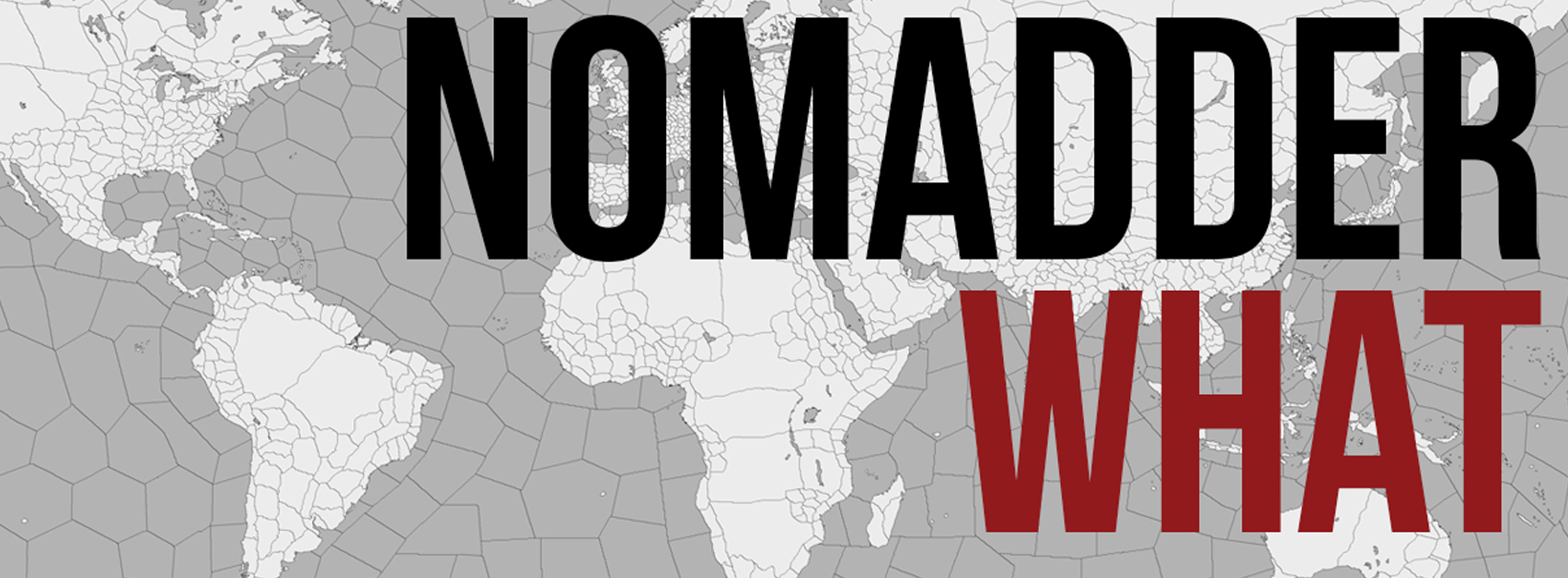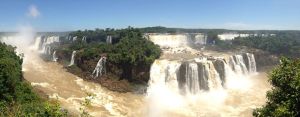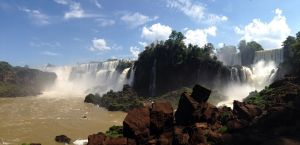When I was young, maybe around eight or nine years old, my parents took me to see Niagara Falls. I mostly remember the falls being huge, buying a few Canadian flags, hearing stories of people going over the falls in wooden barrels, and the part where you can walk onto a small ledge underneath the falls and get wet. It was a fun little excursion for a child, but nothing that really made an impact on me overall (no offense Mom and Dad, I was a kid). However, the Iguazu Falls located on the border of Brasil and Argentina, a UNESCO World Heritage Site, is an entirely different story altogether.
At two times the size and three times the volume of Niagara, Iguazu Falls makes the waterfall on the United States and Canadian border seem almost childlike. In fact, when U.S. First Lady Eleanor Roosevelt initially saw Iguazu Falls, her first words were “Poor Niagara!” That might be because Iguazu Falls spans 1.7 miles, rises nearly 270 feet tall, and features the sixth greatest average annual flow of any waterfall in the world at 1,746 m3/s. I don’t really know how much 1,746 m3/s is, but from what I saw, it’s A LOT!
The first day I visited the Brasilian side of the Foz do Iguaçu. The cost of admission is 49 Reais (~$20 USD), which includes transportation to and from the entrance of the park to the actual falls. There are other activities you can partake in as well such as 2-3 hour guided hikes, 10 minute helicopter rides, and 1.5 hour boat rides into the falls. However, these activities can bolster your budget for the day, as the boat ride alone costs roughly 170 Reais (~$70 USD).
In comparison to the Argentinian side, the Brasilian side contains about 20% of the falls; where the trails are a little shorter, but the area in which you can stand under the falls is much larger. Along the trails you receive large panoramic views of the falls, and the water flowing into the gargantuan area named The Devil’s Throat is nothing short of spectacular. You can walk onto large catwalks that take you almost directly into The Devil’s Throat and can take pictures that make it seem like you’re right under the falls. Warning: You will get wet – VERY wet. If you have a DSLR camera, you might want to holster it and just go with your digital or smartphone camera, as the 500-feet high mist and spray from the falls will leave you drenched from head to toe.
The second day I was in the city of Foz do Iguaçu, I took a private shuttle from the Brasilian side to the Argentinian side. The shuttle cost roughly 70 Reais (~$25 USD) roundtrip, which may seem steep, however the distance from the Brasilian entrance to the Argentinian entrance, including crossing the border, is about a half hour trip each way which justifies the price. The cost of admission in Argentina is $210 AR (~$25 USD) and also has other activities such as guided hikes and boat rides available. If you’re going to do a boat ride, I recommend the Argentinian side as it’s much cheaper. For a 12-minute boat ride you’re going to spend about $170 AR ($20 USD). It’s not nearly as long as the 1.5 hour ride you can take in Brasil, but it allows for photo opportunities and then takes you directly underneath the falls that leave you soaking wet.
In comparison to the Brasilian side, the Argentinian side contains about 80% of the falls; where the trails are much longer and provide for more forested scenery and many more different points of view of the falls. You can stand below, to the side, and above the falls, so you really have your choice when it comes to views and photo ops. I really enjoyed being able to hike down long trails and along rocks that border the side of the falls. Your admission price really gives you a full day of different sights and amazing views. Just make sure you bring your hiking shoes as you’ll be walking up and down trails all day long!
If I had the choice of only visiting one side I would recommend the Argentinian side. While the Brasilian side has its own good qualities, the size of the falls in Argentina, the long trails, cheap activities, and more eco-friendly environment give the Argentinian side much more appeal. That being said, if you’re going to be in Foz do Iguaçu, you might as well spend an extra day and check out both sides. As one of the great natural wonders of the world, you won’t be disappointed.









